How Brexit has revived controversy over the Elgin Marbles in Britain
The Parthenon Sculptures have been the subject of debate for more than 200 years. With Theresa May scurrying around the EU trying to deliver Brexit, Greece is quite right to probe the possibility of bringing the treasures home
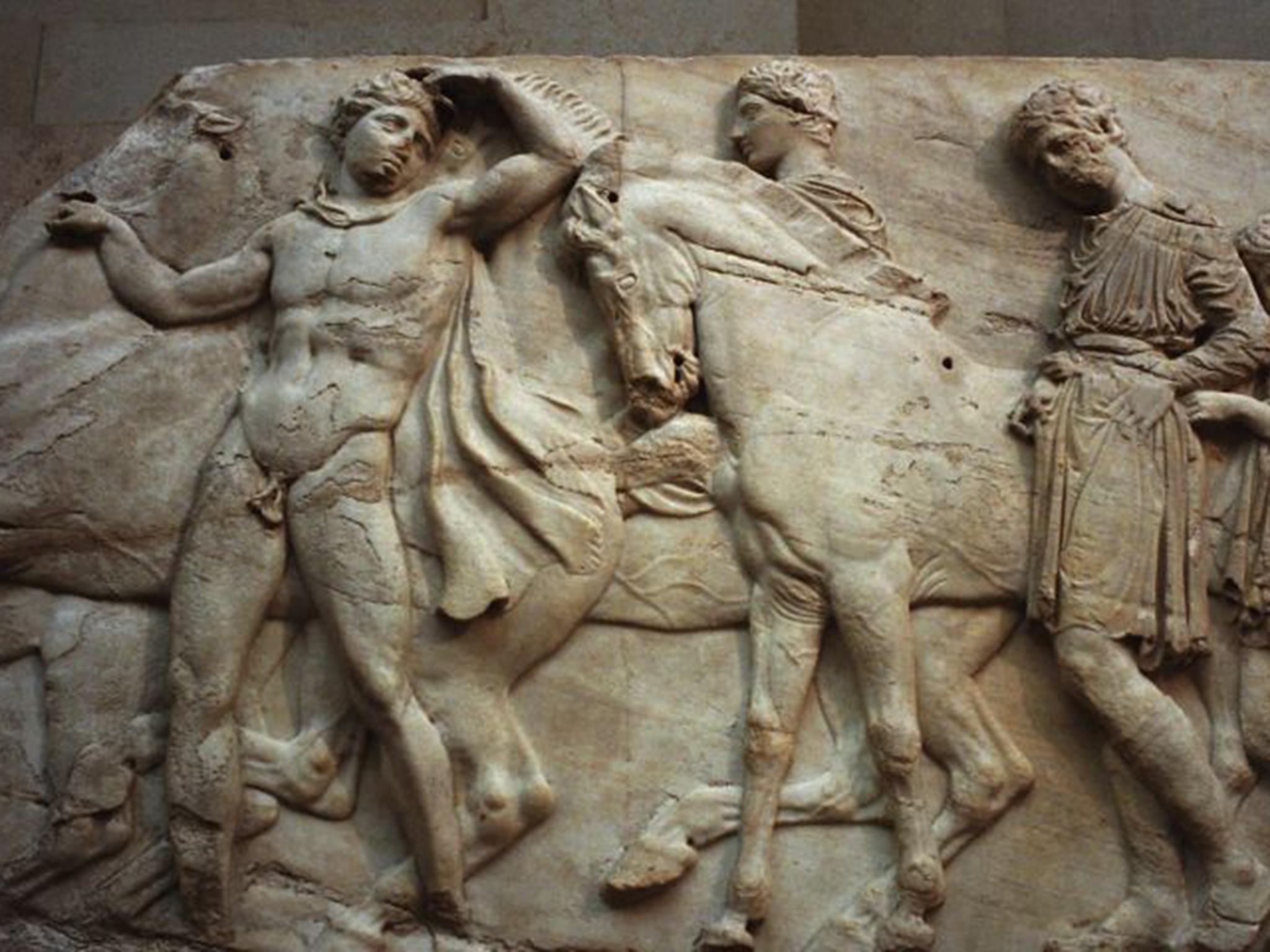
It seems unlikely that several hundred tonnes of marble from Mount Pentelicus near Athens could have a significant role to play in Brexit. But, following a letter from the Greek government to Jeremy Wright, the culture secretary, that is exactly what is now happening. Lydia Koniordou, Wright’s Greek counterpart, has asked for dialogue with Britain over the antique sculptures known as the Elgin Marbles.
Brought to Britain in the early 1800s by Lord Elgin, the artworks – more properly known as the Parthenon Sculptures – have aroused excitement and controversy ever since. They first went on display in London in 1807, then from 1817 they reached an international audience from a new home in the British Museum. Everyone from Canova to Rodin declared them to be among the most exceptional sculptures ever made. Over two centuries later, they remain one of the British Museum's most popular displays.
Not everyone was happy that Elgin shipped the sculptures to Britain. Lord Byron famously lamented: “Dull is the eye that will not weep to see / Thy walls defaced, thy mouldering shrines removed / By British hands.” But few put his panegyric into context. Byron was a Romantic, who wanted the monumental art of ancient Greek civilisation to crumble poetically as decayed vestiges of lost perfection. He was also making a one-off point rather than speaking from principle, as he personally imported Greek antiquities to Britain and sold them privately.
Nevertheless, Byron's mixed attitudes towards ancient Greece express some of the challenges inherent in questions of cultural heritage, which often see a feverish mix of emotion and romance meet a hard wall of reality.
“For me, the Parthenon Sculptures raise some of the biggest questions of cultural property, ownership and where works of art ‘belong’,” explains Mary Beard, professor of classics at Cambridge,
The timing of Greece’s recent letter could not be more significant. Theresa May's beleaguered strategy to deliver Brexit will ultimately require the consent of all 27 EU members. That means individual rounds of diplomacy with each country. Greece is taking the opportunity – quite understandably – to probe for a possible quid pro quo, which it hopes will include the Parthenon Sculptures.
There have been similar requests from Greece in the past, notably in a campaign by former Greek culture minister Melina Mercouri in the 1980s. However, consecutive British governments have consistently rejected all such requests, although an unexpected door was opened in June when Jeremy Corbyn announced that any government led by him would make it a policy to give the sculptures to Greece.
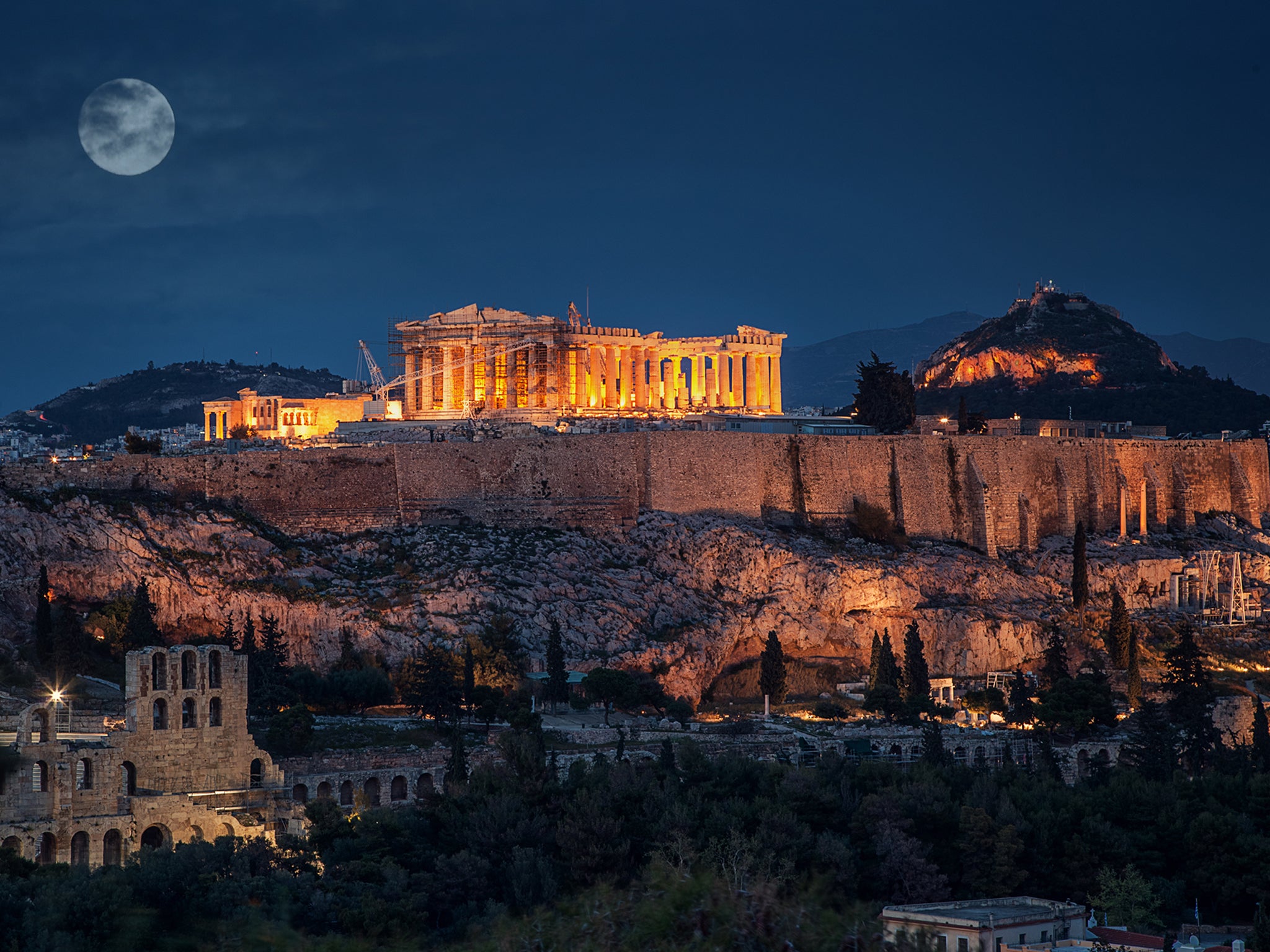
Corbyn's statement was based on his conviction that the sculptures “belong” to Greece. He referred to them as “stolen” and “looted” by Britain. Many share this view, including members of the British Committee for the Reunification of the Parthenon Marbles, or BCRPM – one of the key groups formed in the UK to press for the sculptures to be given to Greece.
The British government's view goes back to 1816, when a UK Parliamentary Select Committee interviewed witnesses – including Elgin – who had been in Athens at the time, and concluded that Elgin had obtained all necessary permissions from the Ottoman authorities in Athens to remove the sculptures and transport them to England. The Select Committee then voted, 82 to 30, to acquire the sculptures for the nation, before presenting them to the British Museum for public display, scholarship, enlightenment and enjoyment.
In many circles, however, there are misgivings about Britain claiming ownership over antiquities that manifestly were not made in Britain. This feeling is tinged with even more awkwardness as the sculptures were acquired during the age of Empire: a period not known for its cultural sensitivity.
However, these are generalities. The Parthenon Sculptures have a well-documented and unique history which sheds important light on the controversy.
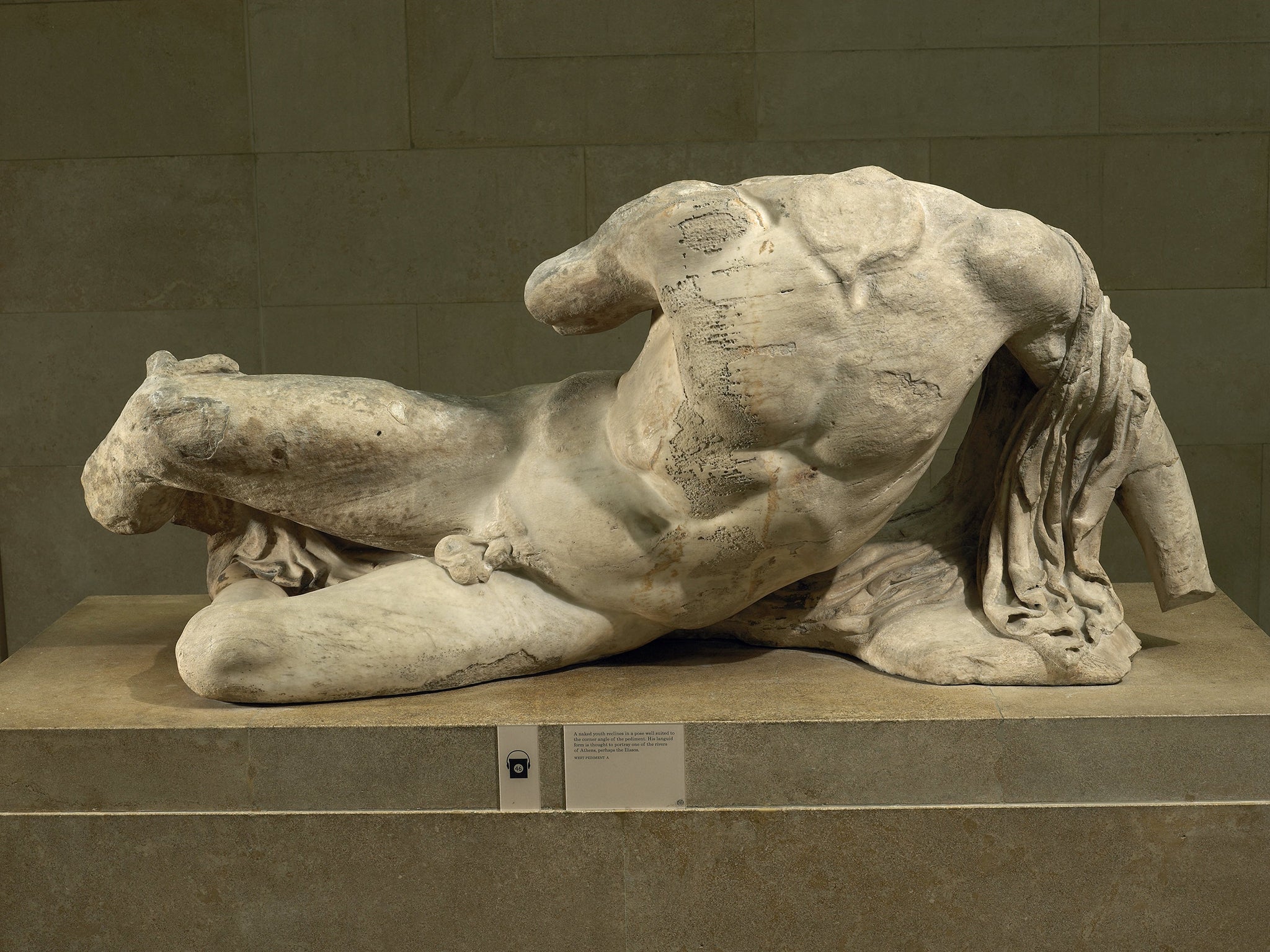
Around 480BC, Athens was entering its Golden Age. It had finally seen off Persia, and the philosophers and playwrights we revere as the founders of western civilisation were starting to tread its sun-hardened streets.
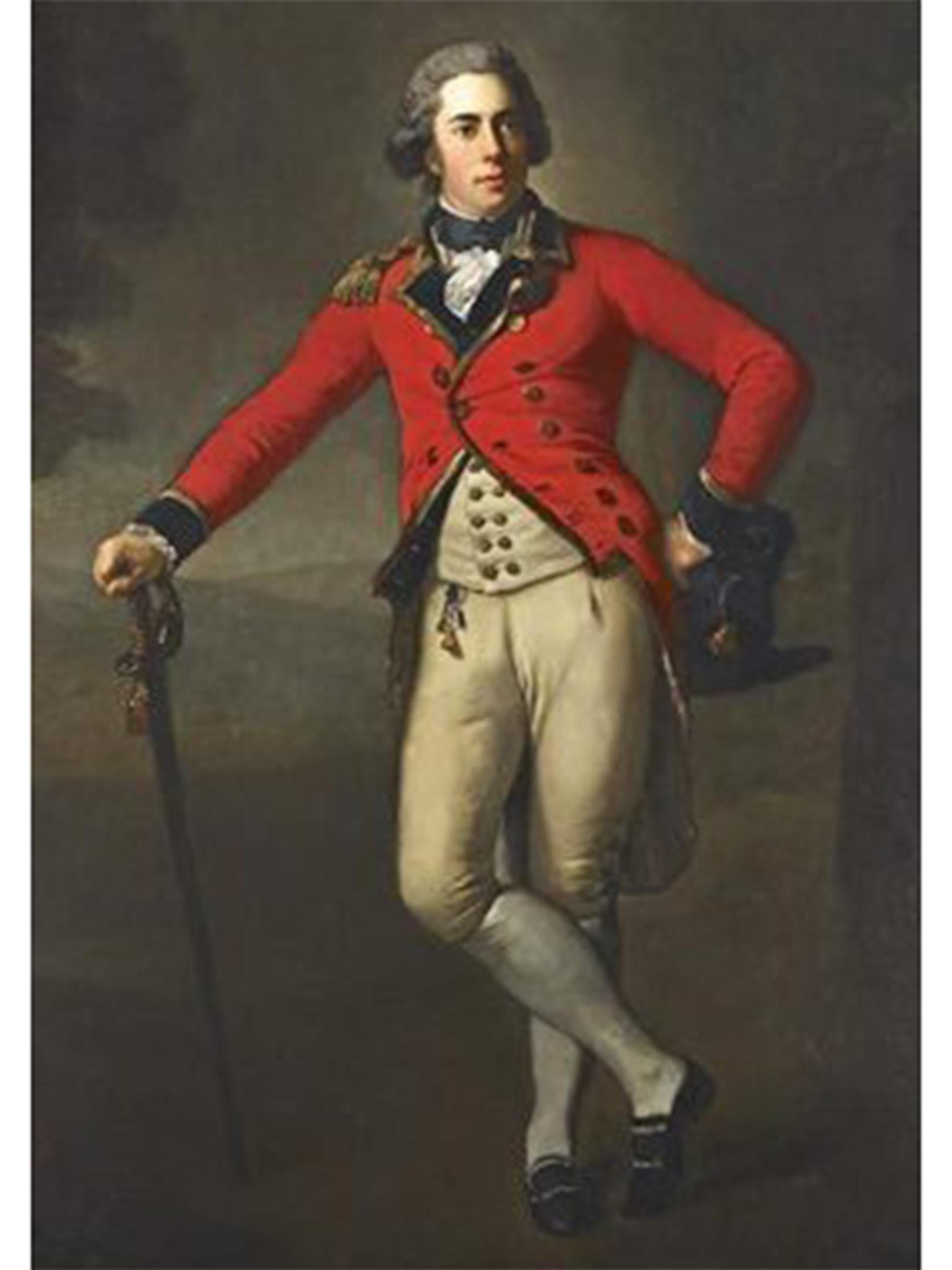
Pericles, the city’s leader from around 461BC, decided to mark the city’s new influence and affluence with a vast building project. One of its highlights was to be a magnificent new temple to Athena the Maiden (Parthenos) built on the Acropolis, the city's highest hill. To ensure the temple was the envy of all, Pericles commissioned one of the city’s sculptors, Pheidias, to decorate the sacred building with a scheme of sculpture that would transport visitors from earth up onto Mount Olympus itself.
The artisans in Pheidias’s workshop hacked and smoothed the white marble until eventually the pieces – once vividly painted – were hoisted up onto the great temple. Onlookers were agog, and anyone looking at the sculptures today will know why. The bodies throb with life. The skin appears warm and real to the touch. The gossamer drapery flows as if in natural motion. And the drama of the scenes is charged with an ethereal tension and electricity that is almost unparalleled in art. There are few major sculptors in the last two hundred years who have not looked on them and felt cowed.
Once the classical world of mercurial gods and goddesses faded and the era of Christianity dawned, the sculptures began to suffer. Around AD500, the citizens of Athens defaced many and hacked off others in order to convert the Parthenon into a church. This systematic iconoclasm was the single largest act of destruction in the sculptures' history. Further damage occurred in 1687 when an invading Venetian force bombarded the Acropolis with mortars and scored a direct hit on the Parthenon, which was being used by the ruling Ottomans as an explosives store.
The Ottomans – who had conquered Athens in 1456 – are a key player in what was to happen next. In 1799, Thomas Bruce, seventh Earl of Elgin, was appointed Britain’s ambassador to the “Sublime Porte” of the Ottoman Empire at Constantinople. According to some sources, inspired to allow the people and artists of Europe to enjoy the wonders of ancient Greek art, Elgin spent his own money on commissioning artists and sculptors to draw, paint and take casts of the Parthenon Sculptures and other statuary and stonework in Athens.
When Elgin's men arrived in Athens, they found the Ottomans had turned the Acropolis into a military garrison, and soldiers were using the sculptures on the Parthenon for firearms target practice, and hacking bits off to sell to the growing throngs of tourists on the Grand Tour. By this time the Parthenon had only around half of the sculptures that Pheidias originally placed there, with many in poor condition. Mary Beard explains: “The Acropolis was then a rather sordid Turkish military base, and it would have been easy to convince oneself – rightly or wrongly – that the sculpture was better off out of there.”
Elgin’s men then began overseeing the removal of the sculptures. Over the course of 10 years, they used local labourers to take down around half of the sculptures on the building (a quarter of the originals), which Elgin shipped back to Britain.
Those 10 years, 1800-10, lie at the heart of the whole Elgin controversy. Opinions divide. Some say Elgin was a hero and conservator who saved the sculptures for the world. Others, like Paul Cartledge, professor of Greek Culture emeritus at Cambridge, differ: “I believe,” he says, “Elgin had purely self-aggrandising reasons for seeking to acquire – for himself and his own personal display – as many of the Marbles as he could.”
The 1816 UK Parliamentary select committee concluded otherwise. After examining witnesses and records, it noted that in 1801 Elgin had obtained a firman – an Ottoman legal permit – which, according to a translation shown to them, permitted Elgin to make drawings, create casts and take away “any pieces of stone with inscriptions or figures”.
The BCRPM and other reunificationists stress that Parliament did not see the original firman, and so the permit's specific terms remain unknown. Moreover, they say, even the translated version does not explicitly envisage the wholesale removal of so much sculpture. Elgin was, they say, guilty of mission creep.
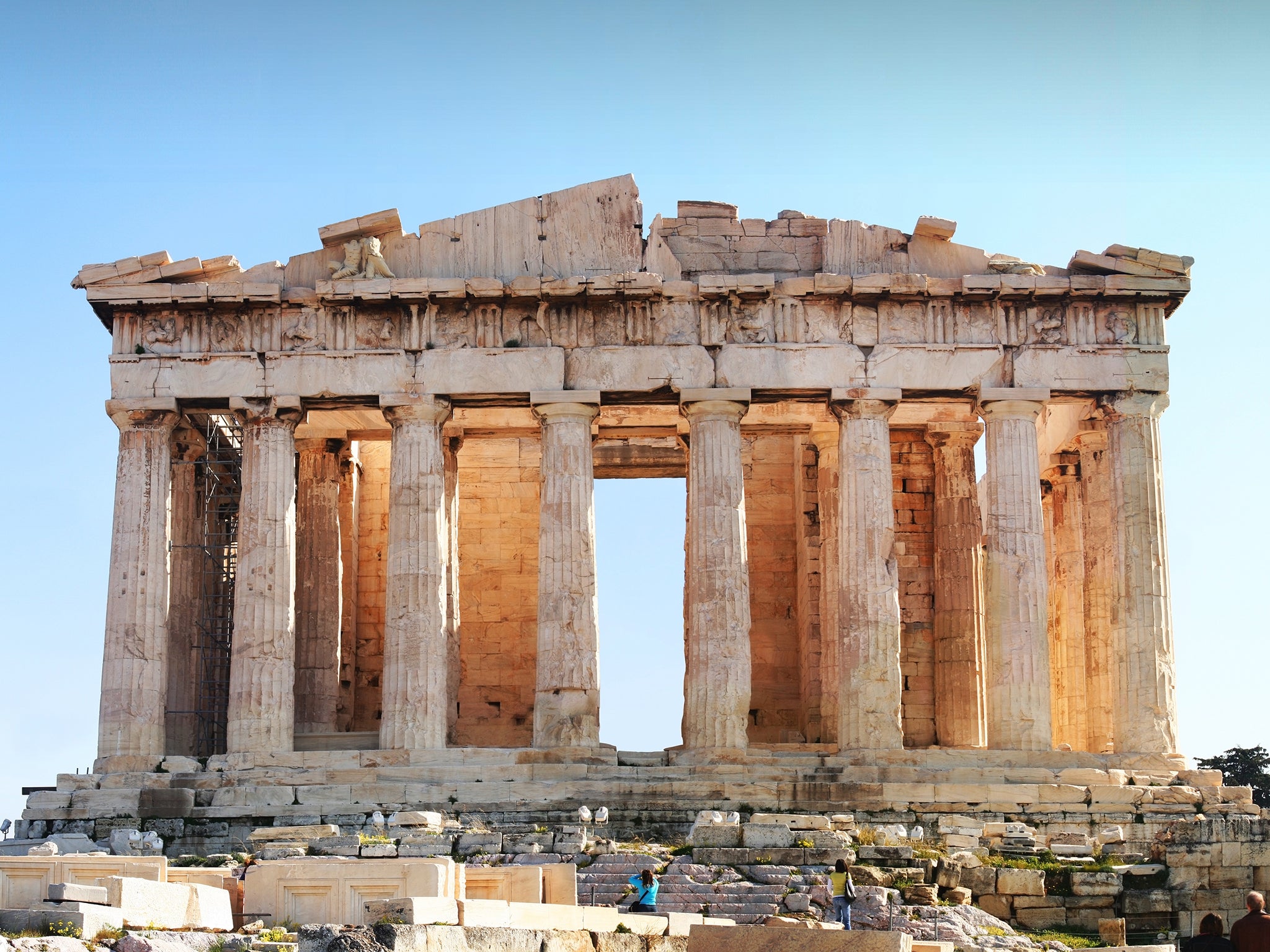
Whichever view is right, another angle to the question is that Elgin, as ambassador, had the power of the British state behind him. Britain had just defeated Napoleon, who was also an enemy of the Ottomans. Britain was therefore in good odour at the Ottoman court, and Elgin was in a position to ask for favours. “Elgin,” Paul Cartledge believes, “certainly unquestionably exploited the fraught international situation c. 1800, whereby Britain was the enemy of the Ottoman Sultan's (French) enemy and therefore the Sultan's ‘friend’.”
Those who view Elgin in a more kindly light point to the fact all this removal work was not done covertly or surreptitiously. It was carried out over a period of 10 years, in broad daylight, in central Athens, using hundreds of Greek labourers, under the noses of the authorities, and was even revalidated by a second firman in 1810 when the work was complete and French diplomats tried to hold up the last shipment (the French were hoping that they might get some of the sculptures for the Louvre).
This leads to one of the central disagreements in the whole debate. Greece – aided by allies, including Britain and British philhellenes who had been inspired by seeing the Parthenon Sculptures in London – overthrew the Ottomans in 1832 and restored Greek government. The BCRPM therefore asks how the Ottomans can have given Elgin valid authority to remove the sculptures when they were an illegitimate occupying power.
However, the lawyers don’t see it this way. When the Greek government instructed Amal Clooney and Geoffrey Robertson to advise them in 2014, the Syriza government eventually decided that the route to gaining the sculptures was political and diplomatic rather than legal. This came as a surprise to no one. In 1985, Professor John Henry Merryman of Stanford Law School, a leading authority on cultural property, examined the case for restitution and concluded that the modern state of Greece had no legal, moral, or ethical claim to the sculptures.
One of the reasons for this is that by the time Elgin’s men arrived in Athens in 1800, the Ottomans had ruled Greece for almost 350 years. Countries are forever changing hands, and the Ottomans were, in fact and law, the internationally recognised government of the day. Who else, many ask, should or could Elgin have requested for permission to remove the sculptures to safety?
When Elgin got back to Britain, he was suffering from catastrophic debt. He estimated he had spent around £73,600 (around £3.5m in today’s money) bringing the sculptures to Britain. Parliament offered him £35,000 for the lot, which he accepted. The sculptures went to the British Museum. “It is a myth that Elgin profited hugely from 'getting' the marbles,” Mary Beard explains. “His wife walked out, and he faced bankruptcy, which prompted the sale to the government.” Elgin moved to France, where he died, broken and bankrupt.
Once on display in London, the sculptures caused a sensation and started waves of fashion for Greek art and civilisation. “The marbles in London were a vital catalyst for 19th-century Europe's passion for Greek culture,” explains Dr Greg Sullivan, a leading sculpture historian. “The marbles got into the bloodstream of contemporary 19th-century art. If you attended the Royal Academy art schools or the Derby Mechanics Institute, or if you visited Oxford, Cambridge or Wisbech art galleries, you would be greeted with copies of the statues or casts from the Parthenon frieze.
“Flaxman, Westmacott, Gibson, Chantrey. Leighton and Alma-Tadema all acknowledged their influence. It demonstrates how passion for European culture has been a key part of Britishness for centuries, Plaster casts by the British artists Westmacott and Brucciani were given or sold all over Europe to courts and art schools in Germany, Italy, Spain and elsewhere, accelerating the passion for Hellenic civilization. Henning’s miniature relief copies of the frieze were sold and pirated in Paris, Rome, Munich and Vienna.”
The sculptures Elgin left in Athens did not fare well. Pollution from the oil refinery at nearby Eleusis eroded many into furry vestiges of their former glories, and a restoration from 1895-1933 by Nicholaos Balanos stapled the sculptures with iron bars which expanded, shattering sections of marble. Fortunately, the casts commissioned by Elgin preserved the details of these sculptures, and have enabled replicas to be made. The British Museum also came in for criticism for an overly abrasive cleaning program in the late 1930s, when it was fashionable to make antique sculptures gleam bright white. However, it was nothing that was not being done at the time to artefacts all over the world, including in Greece. The British Museum subsequently conducted a full investigation, held a conference, and published all results.
Looking at all the evidence, Mary Beard concludes: “We must not turn a blind eye to all the problems here, but we should put them in their historical context, without whitewashing or demonising Elgin.”
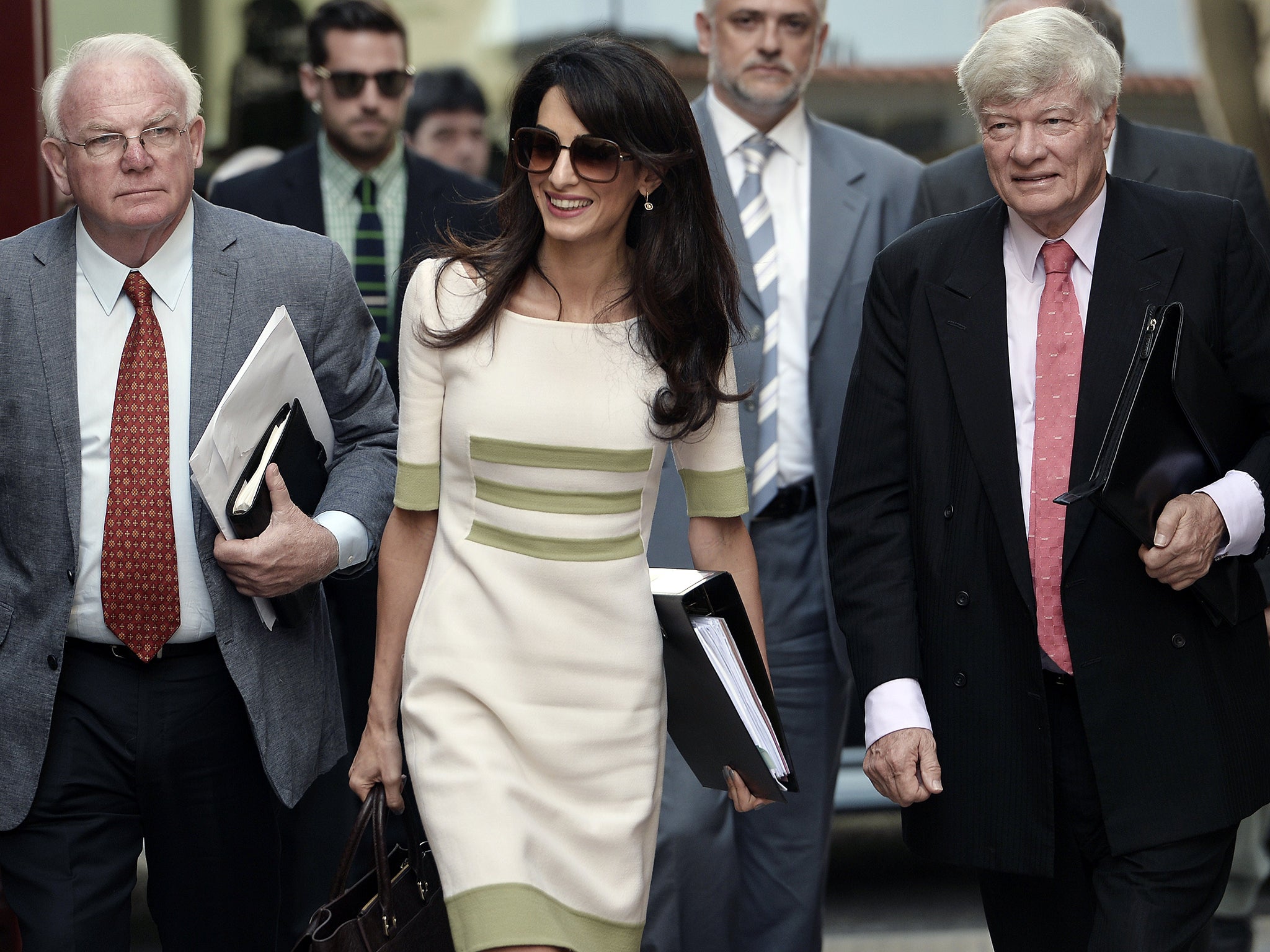
The Elgin Marbles controversy does not, of course, begin and end with Elgin and the wording of his permits. A broader question – which is an increasingly important one – transcends the legal technicalities and asks whether an increasingly culturally sensitive world should be engaging in a general amnesty of cultural artefacts.
It is now a real question whether museums should – as a moral act – send objects to the places they were made. There can be strong arguments in favour. Some were looted in war. Some would bring tourism to their home regions. Some have ongoing cultural meaning. “To me, the legality of the matter is the least important thing,” says Paul Cartledge. “We don't actually know what the Sultan's firman actually permitted Elgin to do. The most important thing is to see what remains of the sculptures – from the British Museum and elsewhere – reunified where they properly can be best appreciated, in the New Acropolis Museum of Athens.”
However, against this view is the inevitable sense of loss the world would feel if its principal museums were emptied out. These great “encyclopaedic” or “universal” museums – largely products of the age of Enlightenment – offer a unique opportunity for everyone to experience the interrelationship of all things. In these museums' vast collections – in Paris, Berlin, St Petersburg, London, Athens and elsewhere – visitors gaze into other cultures, not just into a reflection of their own. They are museums of humanity.
Dr Tiffany Jenkins, expert in museums and cultural property, sees strong reasons for artefacts remaining spread around the globe. “The question we should ask is, where is best for the object, in terms of truth, access and preservation? The present situation – where half the remaining sculptures are in Athens and the rest are in London – is a good one. It means the marbles can be seen and understood both in Athens, in the Acropolis Museum close to where they were created, and in London, where they are placed within a universal collection of artefacts from multiple human civilisations.” It is a powerful alternative vision to the idea of restitution, aimed at promoting a wider appreciation of the sculptures.” Jenkins continues: “Like time machines, these museums provide historical context and cross-cultural insight.”
The idea of returning objects to their place of origin can also be a challenge if history has moved on. Greece, for instance, did not exist when Pheidias made the sculptures. The Parthenon was a resolutely Athenian project, with the temple used as a treasury for protection money Athens collected from the other Greek city states in the Delian League. Dr James Campbell, fellow in art history and architecture at Cambridge, notes: “It is worth remembering that the Parthenon itself was built on the proceeds of war and taxation and came to be seen by many parts of the Greek world as a symbol of Athenian oppression. It was filled with goods stolen and looted from other cultures.” The Delian League evoked such resentment that it prompted a civil war in which Sparta supplanted Athens as most influential power in the region. So although Greece is unarguably the place where the sculptures were made, they were never a symbol of Greek unity, ancient or modern.
“Throughout history, goods have passed across borders and moved from one place to another. Much art fits into this category,” Campbell continues. “Our galleries are full of Italian Masters, Dutch landscapes, French Impressionists. No one is suggesting that every Italian Master belongs to the Italian government. Why, then, do we think the Elgin Marbles belong to the Greek government? Or indeed that the Elgin marbles should be swapped for a better Brexit deal?”
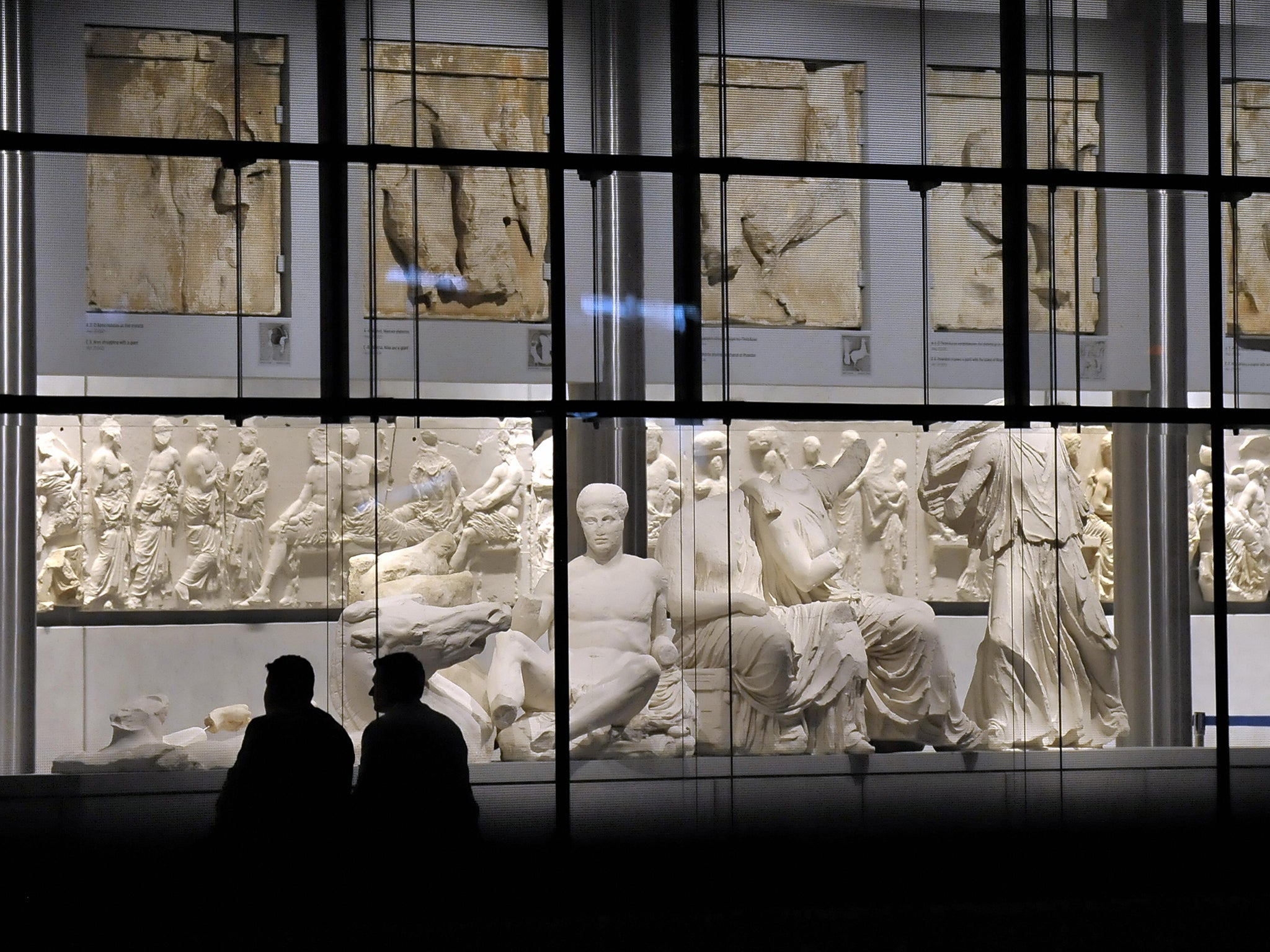
Allied to the question of geographical heritage is yet another, more philosophical, perspective. It asks what an object is, and whether an artefact can have more than one identity or tell more than one story. Seen this way, Pheidias's carvings are simultaneously the Parthenon Sculptures and the Elgin Marbles, and who is to say that both stories should not be told?
Dr Tiffany Jenkins elaborates further. “The sculptures have been discarded as well as venerated, seen as historical documents as well as artworks. In the early 19th-century, the Royal Academician Ozias Humphrey, thought them a ‘mass of ruins’. Most recently at the British Museum they were the centrepiece of a superb exhibition that shed light on the sculpture of Auguste Rodin.”
The future of the Parthenon Sculptures is undeniably a decision for Parliament. The British Museum is governed by statute and has no power to give away objects in its collection unless they are duplicates or unfit for retention. Museums also have little interest in the heated and politicised aspects to these debates. On a day-to-day level, museum curators in London, Athens and around the world share with each other and with the public their research, knowledge and an overwhelming love for the objects they care for.
However, as the recent Greek overture for negotiations shows, one day Parliament may be called upon to make a decision in the case of the sculptures, and perhaps that day will be soon. But the complex, multidimensional questions raised by the Parthenon Sculptures will need to be appreciated in all their shades and nuances. It will simply not do, as Corbyn has done, to fire from the hip and label them as “stolen” property. Neither can the consequences for universal museums be brushed aside, as if the Parthenon Sculptures go, there will inevitably be calls for a mass resettlement of holdings from across the world.
“Today, most school children do not learn Greek,” says James Campbell. “Perhaps the sad reason we are even contemplating giving the contents of the British Museum to the current Greek government is that so few British people understand what the Elgin Marbles are, or care.”
Any decision on the future of the Parthenon Sculptures should be a reasoned and responsible one. It is unarguable that more people have seen and fallen in love with Greek sculpture and ancient Greece in the free-to-enter British Museum than in the museum in Athens. The sculptures’ future must be assessed for the good of the world. The Elgin Marbles do not belong to the Conservative Party, and they must not be reduced to a cheap chip in the chaotic poker game of Brexit.
Dr Dominic Selwood is a historian and barrister. He is the author of Spies, Sadists and Sorcerers: The History You Weren’t Taught in School.
The author expresses his deep thanks to Professor Mary Beard (author of The Parthenon), Professor Paul Cartledge (author of The Cambridge History of Ancient Greece), Dr Tiffany Jenkins (author of Keeping Their Marbles), Dr James Campbell (author of The Library: A World History) and Dr Greg Sullivan (author and editor of the Biographical Dictionary of Sculptors in Britain 1660-1851) for being interviewed for this piece.
@DominicSelwood
Join our commenting forum
Join thought-provoking conversations, follow other Independent readers and see their replies
Comments
Bookmark popover
Removed from bookmarks